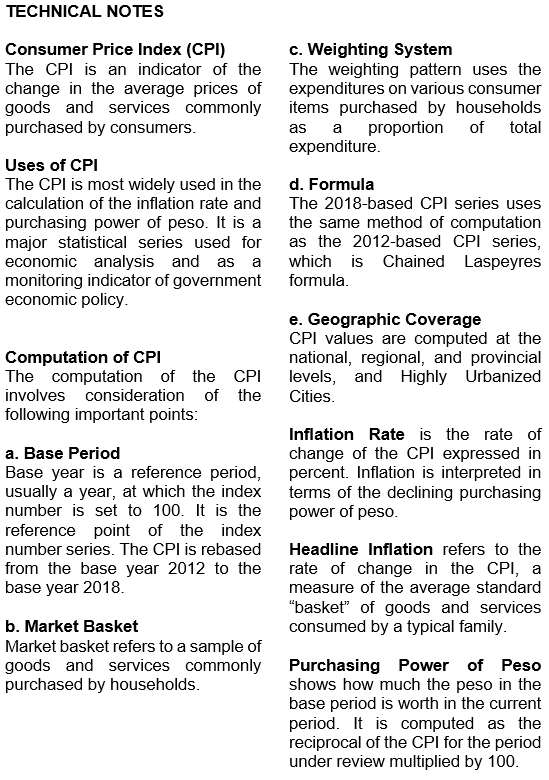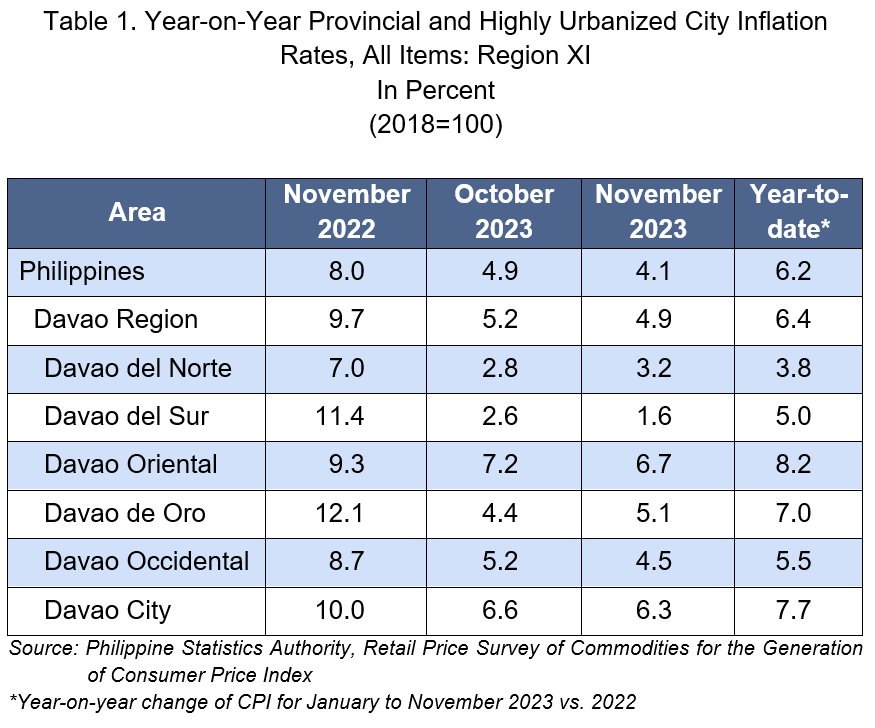
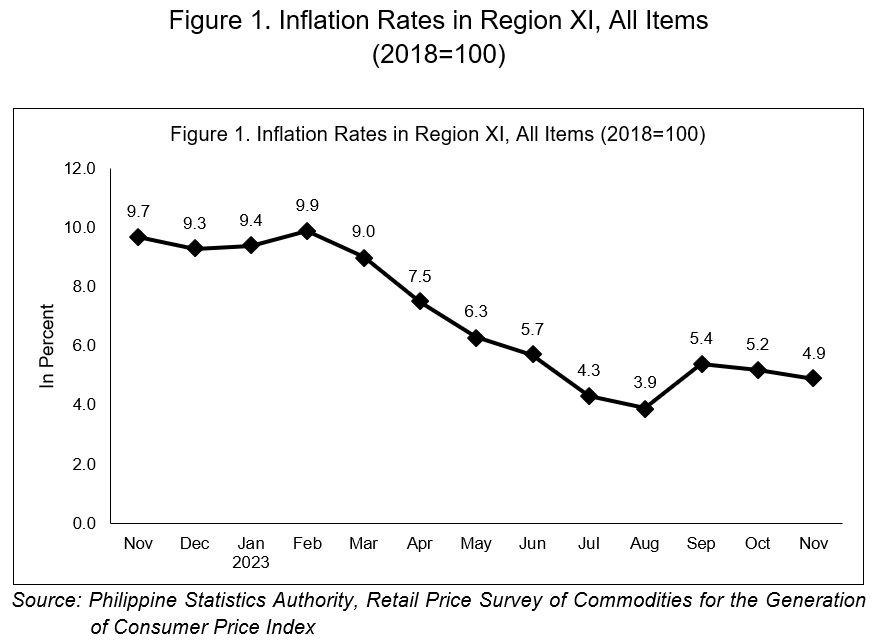
1. Regional Headline Inflation
The year-on-year headline inflation of Davao Region slowed down to 4.9 percent in November 2023, from 5.2 percent in October 2023. The average inflation rate from January to November 2023 stood at 6.4 percent. In November 2022, the region’s inflation was higher at 9.7 percent. (Table 1 and Figure 1).
The decrease in the region’s overall inflation is primarily due to the slower annual growth rate in Housing, Water, Electricity, Gas, and Other Fuels at -1.5 percent from -0.6 percent in the previous month. Additionally, the slower annual increments of Restaurants and Accommodation Services at 10.1 percent from 11.3 percent in October 2023, and Transport at 0.4 percent from 1.2 percent in the previous month contributed to the downward trend of the regional headline inflation. (Table 2)
Moreover, the indices of the following commodity groups displayed lower annual growth rates compared with their previous monthly inflation rates:
a. Alcoholic Beverages and Tobacco at 12.5 percent from 13.8 percent;
b. Clothing and Footwear at 5.6 percent from 6.1 percent;
c. Furnishings, Household Equipment and Routine Household Maintenance, at 5.1 percent from 5.9 percent;
d. Health at 4.6 percent from 5.2 percent;
e. Information and Communication at 1.0 percent from 1.2 percent;
f. Recreation, Sport, and Culture at 7.0 percent from 7.3 percent; and
g. Personal Care, and Miscellaneous Goods and Services at 5.6 percent from 6.3 percent.
On the other hand, faster annual growth rates were observed in the indices of Food and Non-Alcoholic Beverages at 7.7 percent from 7.1 percent in the previous month. Meanwhile, the indices for Education Services and Financial Services retained their previous month’s inflation rates.
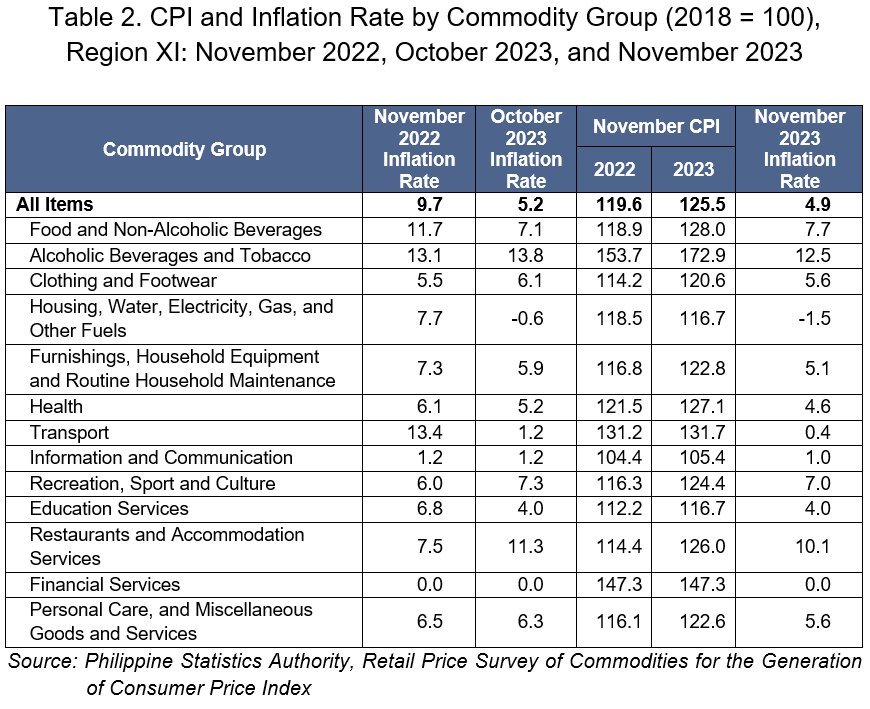
2. Davao Region Food Inflation
Davao Region’s Food inflation accelerated to 7.7 percent in November 2023 from 7.0 percent in the previous month. In November 2022, Food inflation was higher at 11.9 percent. (Table 3)
The main driver in the increase of Food inflation in the region in November 2023 is Cereals and Cereal Products at 16.3 percent from 14.6 percent in the previous month. The following food groups also recorded higher inflation compared to October 2023:
a. Rice at 23.7 percent from 20.5 percent;
b. Fish and Other Seafood at -2.5 percent from -3.8 percent;
c. Milk, Other Dairy Products, and Eggs at 9.9 percent from 8.9 percent; and
d. Vegetables, Tubers, Plantains, Cooking Bananas and Pulses at 5.0 percent from 4.0 percent.
On the other hand, the price movement of the following groups moved slower compared to the previous month:
a. Corn at -2.2 percent from -2.1 percent;
b. Flour, Bread and Other Bakery Products, Pasta Products, and Other Cereals at 4.6 percent from 4.8 percent;
c. Meat and Other Parts of Slaughtered Land Animals at 4.6 percent from 4.8 percent;
d. Oils and Fats at -0.6 percent from 1.1 percent;
e. Fruits and Nuts at 16.5 percent from 22.4 percent;
f. Sugar, Confectionery and Desserts at -4.3 percent from 0.1 percent; and
g. Ready-Made Food and Other Food Products N.E.C. at 6.9 percent from 7.0 percent.
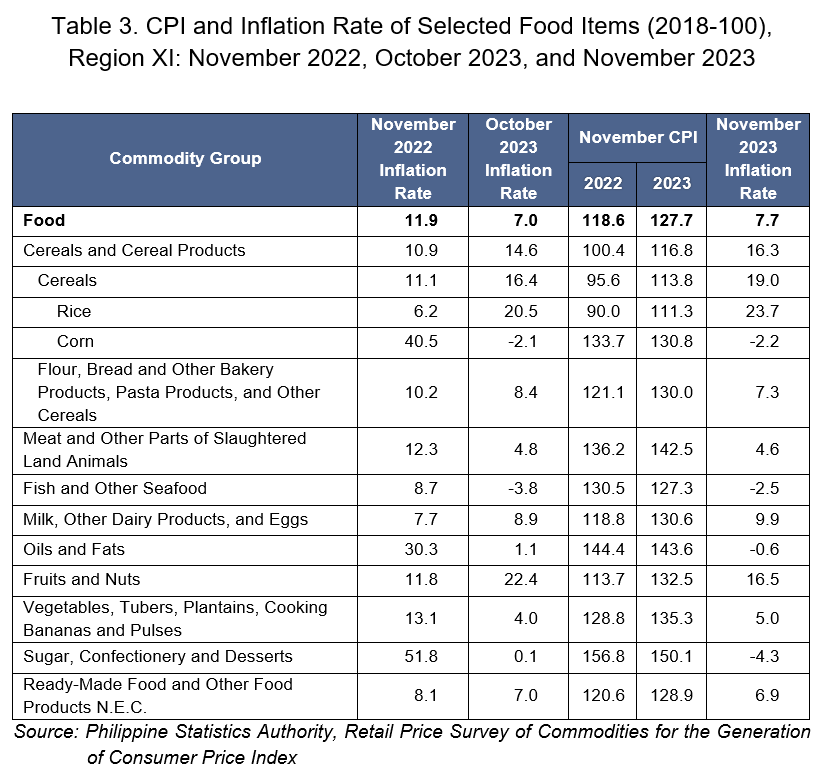
3. Regional Inflation Rates
At the national level, the country's headline inflation declined futher to 4.1 percent in November 2023, from 4.9 percent in the previous month (Table 4).
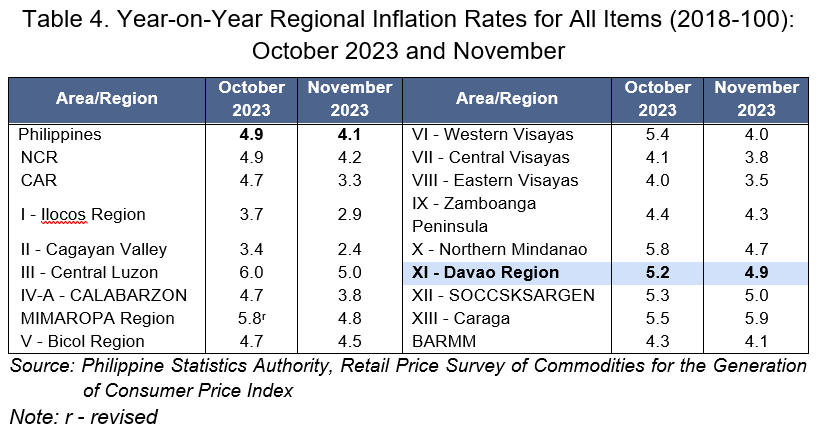

Among the 17 administrative regions, BARRM had the highest inflation at 5.9 percent followed by Central Luzon and SOCCSKSARGEN at 5.0 percent. On the other hand, Cagayan Valley had the lowest inflation at 2.4 percent. (Figure 4)
Note: CPIs and inflation rates by province and selected city are posted on the PSA website (http://openstat.psa.gov.ph/).
APPROVED FOR RELEASE:
RANDOLPH ANTHONY B. GALES
(Chief Statistical Specialist)
Officer-In-Charge
Regional Statistical Services Office 11
